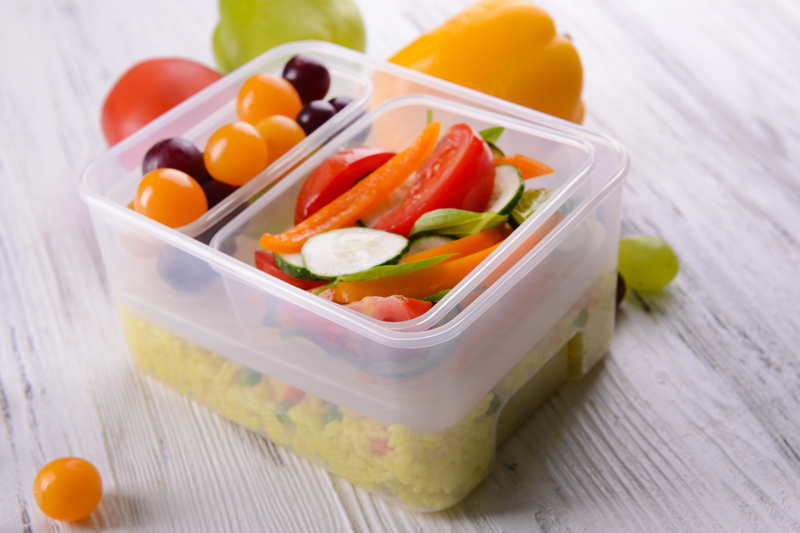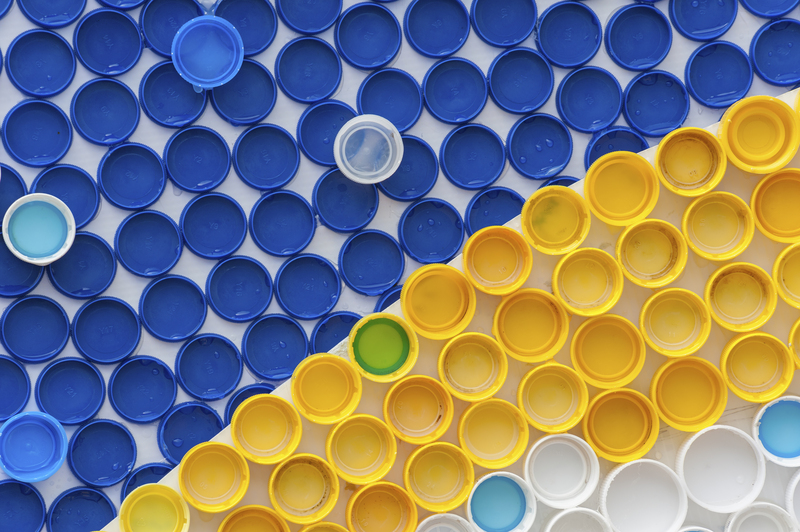Choosing the Right Plastics to Avoid: A Comprehensive Guide
Plastic is everywhere in our daily lives, from packaging and food containers to clothing and electronics. As the world becomes more aware of plastic pollution's environmental and health impacts, it's crucial to know which plastics are safe and which types of plastics you should avoid. By learning how to identify hazardous plastics and make conscious choices, you can protect your health and contribute to a healthier planet.

Understanding Plastics: Types and Concerns
Plastics are classified by their chemical composition. They are assigned numbers, called resin identification codes (RIC), usually marked within a recycling symbol on the product. These numbers help consumers determine the kind of plastic they are dealing with. However, not all plastics are created equal. Some are considered safe for specific uses, while others are linked to potential health risks and environmental hazards.
The 7 Resin Identification Codes (RIC)
- 1 - Polyethylene Terephthalate (PET or PETE)
- 2 - High-Density Polyethylene (HDPE)
- 3 - Polyvinyl Chloride (PVC)
- 4 - Low-Density Polyethylene (LDPE)
- 5 - Polypropylene (PP)
- 6 - Polystyrene (PS)
- 7 - Other (usually Polycarbonate or BPA-containing plastics)
Each type behaves differently in terms of safety, recycling, and environmental impact. Choosing the right plastics to avoid isn't always intuitive, so let's look at which numbers to steer clear of and why.
Which Plastics to Avoid - and Why
Let's break down the most problematic plastics you're likely to encounter, their common uses, the risks associated with them, and healthier alternatives.
Plastic #3: Polyvinyl Chloride (PVC)
- Uses: Pipes, cling film, food packaging, toys, shower curtains, wire coatings.
Why to Avoid:
PVC contains dangerous chemical additives such as phthalates (used as plasticizers to soften the material) and sometimes lead. Phthalates can leach out of PVC products, especially when heated, and have been linked to hormone disruption, reproductive problems, allergies, and even cancer. Manufacturing PVC releases dioxins, highly toxic compounds that persist in the environment and accumulate in the food chain.
Healthier Alternatives: Look for products made from safer plastics like HDPE (#2) or opt for glass, silicone, or stainless steel containers.
Plastic #6: Polystyrene (PS)
- Uses: Disposable coffee cups, take-out containers, cutlery, packing peanuts, egg cartons.
Why to Avoid:
Polystyrene is commonly known as styrofoam. It can release styrene, a possible human carcinogen, especially when in contact with hot, oily, or acidic foods. Polystyrene is also notorious for being virtually unrecyclable and persisting in landfills and the environment for centuries, contributing significantly to pollution and microplastics.
Healthier Alternatives: Choose products made from paper, certified compostable fibers, or reusable containers.
Plastic #7: Other (often Polycarbonate, BPA-containing Plastics)
- Uses: Water cooler bottles, sports water bottles, baby bottles, food containers, some can linings, electronics.
Why to Avoid:
Category #7 is a catch-all for plastics that don't fit into the previous categories, most notably polycarbonate, which contains Bisphenol A (BPA). BPA is known for its ability to mimic estrogen in the body, leading to potential endocrine disruption, developmental problems, and a possible link to cancer according to ongoing research. Even "BPA-free" products may pose risks if they contain similar chemicals like BPS or BPF.
Healthier Alternatives: Favor plastics marked #1, #2, #4, #5, or opt for glass, ceramic, or stainless steel - especially for feeding babies and children.
Additional Plastics to Be Cautious About
Plastic #1: Polyethylene Terephthalate (PET or PETE)
- Uses: Water and soft drink bottles, salad dressing containers, food jars.
Is It Safe?
PET is considered safe for single use, but repeated use and exposure to heat can cause leaching of antimony, a toxic metalloid, and phthalates if present in bottle caps or linings. Never reuse PET water bottles for extended periods or expose them to heat.
Plastic #2 and #5: Your Safer Choices
- #2 HDPE: Milk jugs, detergent bottles, juice containers; generally considered safe and stable.
- #5 PP: Yogurt cups, straws, reusable food containers; resists heat well and rarely leaches.
These plastics have strong chemical stability and are less likely to leach harmful substances, making them better picks for food and beverage storage.
Plastic #4: Low-Density Polyethylene (LDPE)
- Uses: Bread bags, frozen food bags, squeezable bottles, plastic wraps.
LDPE is considered low-toxicity and stable but is rarely recycled. Instead of opting for disposable bags, consider reusable cloth or silicone alternatives.
Key Health and Environmental Risks Associated with Problematic Plastics
- Hormone Disruption: Chemicals like phthalates and BPA in plastics such as PVC and PC interfere with hormone function, affecting reproductive and developmental health.
- Carcinogenic Potential: Substances like styrene (from PS) are potential carcinogens.
- Chemical Leaching: Heat, acidic foods, and wear can increase the release of toxic chemicals from plastics into food and drink.
- Pollution and Wildlife Harm: Non-recyclable plastics like polystyrene cause persistent pollution and threaten animals that ingest them or become entangled.
- Microplastics: All types of plastics, but especially the flimsy, non-recyclable ones, break down into microplastics, contaminating water, soil, and the food chain.
How to Identify and Avoid Hazardous Plastics
Check the Recycling Symbol
Every plastic product should have a small triangle with a number inside. This number tells you the resin code:
- AVOID: #3 (PVC/Vinyl), #6 (PS/Styrofoam), #7 (Other/PC/BPA)
- LIMIT: #1 (PET) - single-use only; don't heat or reuse repeatedly
- BETTER CHOICES: #2 (HDPE), #4 (LDPE - not for hot foods), #5 (PP)
Tips for Choosing the Right Plastics to Avoid
- Read product labels for recycling codes or "BPA-free" claims, but remember "BPA-free" is not always risk-free.
- Don't microwave in plastic containers, especially those not marked microwave-safe.
- Avoid storing hot or acidic foods in plastic containers to reduce leaching risks.
- Choose alternatives such as glass, stainless steel, ceramic, or natural-fiber containers.
- Reduce single-use plastics and opt for reusable, eco-friendly materials whenever possible.
Safer Alternatives to Hazardous Plastics
- Glass: Naturally inert, non-leaching, and 100% recyclable. Excellent for food and drink storage.
- Stainless Steel: Durable, reusable, and suitable for both hot and cold items.
- Silicone: Flexible, heat-resistant, and free of estrogenic chemicals if food-grade.
- Ceramic: Good for baking and food prep; just avoid glazes with lead or cadmium.
- Compostable bioplastics: Some certified products offer viable single-use alternatives to polystyrene and PVC.
Common Everyday Plastics to Avoid
- Plastic wrap (cling film): Often contains PVC and phthalates.
- Disposable foam containers: Typically polystyrene; choose cardboard or bring your own.
- PVC toys: Especially for babies and children, as they may chew on them.
- Bottled water: Usually PET, intended for single use only.
- Plastic straws and cutlery: Often PS or PP; best replaced by reusable bamboo, stainless steel, or paper versions.
- Non-stick cookware with plastic coatings: Some low-quality pans use plastic-based coatings that degrade with heat.
Environmental Impact of Choosing the Right Plastics to Avoid
The plastics you decide to minimize or avoid don't just affect your health--they also play a huge role in the environment's well-being. Single-use plastics (especially those that are hard to recycle like #3, #6, and #7) are the leading culprits of ocean pollution and wildlife harm.
- Wildlife Ingestion: Birds, fish, and marine mammals mistake small plastic fragments for food, causing choking, blockages, and toxic chemical exposures.
- Microplastics: Tiny particles of plastic accumulate in soil and water sources, eventually entering the human food chain.
- Non-biodegradability: Many plastics take hundreds to thousands of years to decompose fully.
- Production Pollution: Manufacturing hazardous plastics releases toxins and greenhouse gases.
How to Reduce Your Reliance on Harmful Plastics
- Switch to reusable shopping bags, produce bags, and food wraps.
- Invest in quality drink bottles and lunchboxes made from glass, stainless steel, or food-grade silicone.
- Shop at bulk stores where you can use your own containers.
- Refuse plastic straws and utensils when dining out.
- Look for "package-free" or "zero-waste" alternatives.
Practical Tips for Safer Plastic Use at Home
- Never heat or microwave food in plastic containers unless marked "microwave-safe."
- Don't wash plastic in hot water; use cool or warm temperatures.
- Move leftovers to glass or stainless steel containers before freezing or reheating.
- Avoid storing oily or acidic foods in any plastic container.
- Replace old, worn, or scratched plastic containers, as degradation increases leaching risks.

Frequently Asked Questions about Plastics to Avoid
Are all plastics dangerous?
No, not all plastics are equally hazardous. Some, like HDPE (#2) and PP (#5), are considered safer for food storage. The main concern lies with certain plastics like PVC (#3), PS (#6), and polycarbonate (#7, often contains BPA), which are best avoided.
Can plastic items labeled as "BPA-free" still be unsafe?
Yes. Some "BPA-free" plastics use alternative bisphenols, like BPS or BPF, which may pose similar health risks. Whenever possible, opt for trusted materials like glass or stainless steel for food and beverage storage.
Is it safe to reuse plastic water bottles?
No. Most disposable water bottles are made from PET (#1), intended for single use only. Repeated reuse, especially after exposure to heat, can cause chemical leaching and microbial contamination.
What plastics should I avoid for children and babies?
Always avoid anything made from #3 (PVC), #6 (PS/Styrofoam), and #7 (BPA/polycarbonate). Opt for baby bottles, sippy cups, and lunchboxes labeled BPA-free and, ideally, made of glass, stainless steel, or certified silicone.
Conclusion: Make Smarter Choices--Protect Your Health and the Planet
Identifying and choosing the right plastics to avoid is an essential part of living a healthier, more environmentally conscious life. By steering clear of problematic plastics like PVC (#3), polystyrene (#6), and BPA-containing (#7) plastics, and favoring safer options or non-plastic alternatives, you can reduce your exposure to harmful chemicals and make a positive impact on our planet's future.
For the best results, familiarize yourself with recycling codes, read product labels, and adopt reusable alternatives. Every small change counts--especially when it comes to your health and our shared environment.
Ready to make a difference? Start today by minimizing your use of plastics to avoid, and spread the word to empower others on their journey to safer, greener living!